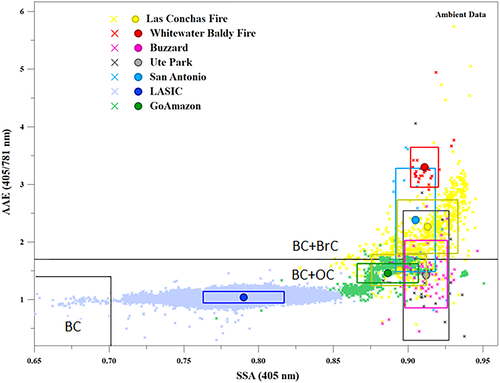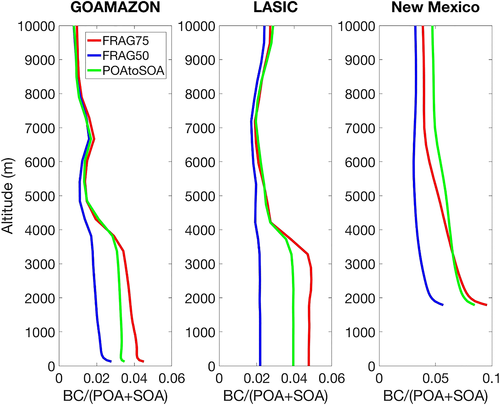E3SM parameterization of aged absorbing biomass burning evaluated using ARM and ASR observations
Submitter:
Dubey, Manvendra K. — Los Alamos National Laboratory
Aiken, Allison C — Los Alamos National Laboratory
Area of research:
General Circulation and Single Column Models/Parameterizations
Journal Reference:
Science
The paper validated and optimized simple parameterizations of aged absorbing aerosols from biomass burning used in the E3SM model by analyzing observations of tropical and southwestern US fire plumes made by ARM campaigns.
Impact
Light-absorbing aerosols from biomass burning that warm climate are represented by idealized parameterizations in climate models. The publication’s model predictions captured observations of optical properties of black and brown carbon from fires in Africa, the Amazon, and the southwest US that span a wide range of conditions. This research discovered that the southwestern US wildfire aerosols contain more brown carbon than the tropical fires, which is attributed to longer aging and drier conditions.
Summary
The paper evaluated simple treatments of aged absorbing aerosols from biomass burning (spherical, uniform mix of black, brown, and organic carbon [BC, BrC, OC], primary emissions, and secondary organic aerosols) in E3SM models with Green Ocean Amazon 2014/15 (GoAmazon), Layered Atlantic Smoke Interactions with Clouds (LASIC), and New Mexico fire data. Mie theory was employed to calculate absorption Ångström exponent (AAE) as a function of single‐scattering albedo (SSA) for a set of BC refractive indices, BC volume fraction, and a set of effective refractive indices of BC and BrC mixtures. Ambient fire plumes were characterized by their mean SSA at 405 nm wavelength and two‐wavelength (405 and 781 nm) AAE values. By comparing observed and model‐calculated AAE and SSA values, we determined a BC refractive index, its volume fraction, and an effective refractive index of the BC and BrC mixture. From these values, the imaginary part of BrC refractive index was calculated and found to be less than 0.016 for southwestern US fires. In contrast, fires in the Amazon and southern Africa are dominated by BC that is attributed to drier fuels and longer aging times.



